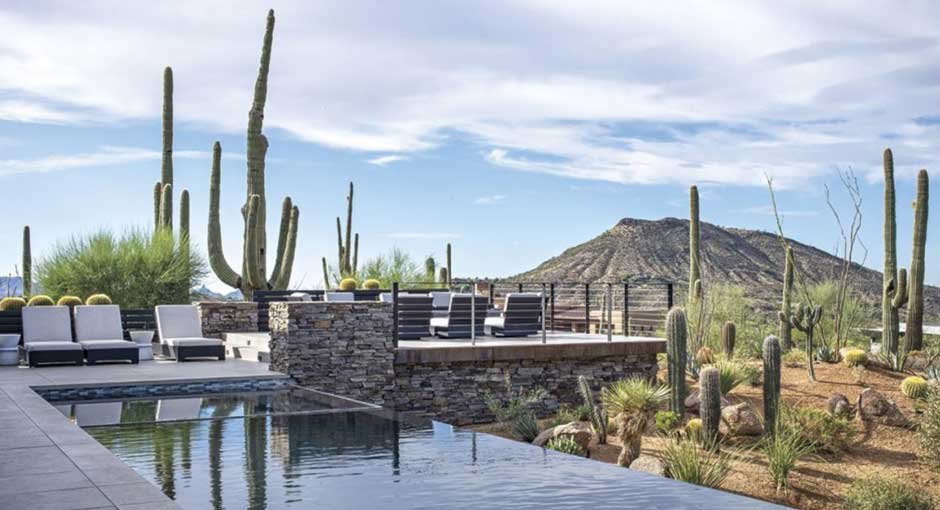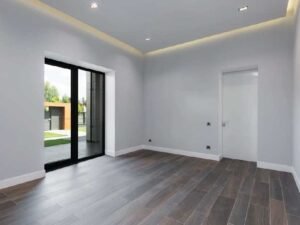The Arizona sun beats down relentlessly on Scottsdale homes, presenting a unique set of challenges that many homeowners may not fully understand. While you might think about protecting your skin and staying hydrated, your home’s plumbing system is silently battling the same harsh conditions, often with costly consequences.
Understanding how Scottsdale’s desert climate affects your plumbing can save you thousands in repairs and help you identify problems before they escalate into emergencies. Whether you’re dealing with burst pipes, water quality issues, or mysterious leaks, the desert environment plays a bigger role than you might expect.
Professional Scottsdale plumbing services become essential partners in maintaining your home’s water systems when extreme weather conditions test every pipe, joint, and appliance.
The desert’s daily assault on your pipes
Extreme temperature swings
Scottsdale’s temperature can swing from over 110°F during summer days to surprisingly cool nights, sometimes dropping 30-40 degrees. This constant expansion and contraction puts tremendous stress on your plumbing system.
Metal pipes expand when heated and contract when cooled. After years of this daily cycle, joints can loosen, seals can fail, and pipes can develop stress fractures. Copper pipes are particularly vulnerable, as they expand more than other materials.
What you might notice:
- Minor water stains near pipe joints
- Dripping sounds on the walls during temperature changes
- Gradual increases in your water bill
Underground temperature extremes
The desert floor can reach temperatures exceeding 150°F in direct sunlight. This extreme heat affects underground water lines, particularly those located near the surface or beneath driveways and sidewalks.
PVC pipes, common in many Scottsdale homes, can become brittle when exposed to prolonged heat. The combination of ground shifting from temperature changes and weakened pipe material creates the perfect storm for breaks.
Water quality challenges in desert conditions
Mineral concentration issues
Arizona’s water naturally contains high levels of minerals like calcium, magnesium, and iron. The desert climate intensifies these effects through evaporation and concentration processes.
Hard water creates several problems:
- Scale buildup in pipes reduces water flow
- Water heaters work harder and fail sooner
- Appliances like dishwashers and washing machines suffer from premature wear
- Fixtures develop unsightly mineral deposits
Sediment and debris
Desert winds carry fine particles that can infiltrate water systems through various entry points. Additionally, aging infrastructure and ground shifting can introduce sediment into water lines.
This sediment settles in water heaters, clogs aerators, and can cause abrasive wear on moving parts in appliances. Regular maintenance becomes crucial for preventing these issues from escalating.
Seasonal plumbing challenges
Summer stress points
The intense summer heat creates unique plumbing challenges that go beyond simple thermal expansion:
Increased water usage: Families use 30-50% more water during summer months for pools, landscaping, and cooling systems. This increased demand can reveal weaknesses in your plumbing system.
Pipe exposure: Pipes located in attics, crawl spaces, or exterior walls are subject to extreme temperatures. Water heaters work overtime, and any plastic components are subject to accelerated aging.
Ground movement: The desert soil expands and contracts in response to temperature changes, potentially shifting underground pipes and creating stress points.
Winter Surprises
Many Scottsdale residents don’t realize that winter can be equally challenging for plumbing systems:
Freeze risk: Desert nights can dip below freezing, especially in January and February. Pipes in unheated areas or exterior walls can freeze and burst.
Thermal shock: The rapid temperature changes between day and night can create thermal shock in pipes, potentially leading to immediate failures or weakened joints, which may cause future problems.
Early warning signs to watch for
Visual indicators
Keep an eye out for these warning signs that suggest your plumbing is struggling with desert conditions:
- Water stains on walls or ceilings: Often indicate slow leaks that worsen over time
- Mineral buildup around fixtures: Shows hard water issues that affect your entire system
- Cracked or separated pipe joints: Visible where pipes are exposed in basements or utility areas
- Rust-colored water: May indicate pipe corrosion accelerated by mineral content and heat
Performance changes
Your daily water use patterns can reveal developing problems:
- Reduced water pressure: May indicate scale buildup or partial pipe blockages
- Inconsistent water temperature: Could signal water heater stress or circulation issues
- Unusual sounds: Banging, whistling, or gurgling sounds often indicate system stress
- Higher utility bills: Unexplained increases might point to hidden leaks or inefficient operation
Protecting your investment
Regular maintenance schedules
Desert conditions require more frequent attention than moderate climates:
Monthly checks:
- Inspect visible pipes for signs of stress or leaks
- Test water pressure at multiple fixtures
- Check the water heater temperature and pressure relief valve
Seasonal maintenance:
- Have your water heater serviced before the summer and winter seasons
- Test and replace water filters more frequently
- Inspect and clean sediment from faucet aerators
Professional assessment benefits
While homeowners can handle basic monitoring, professional plumbers bring specialized knowledge of the unique plumbing challenges that the desert presents. They can:
- Identify potential failure points before they become emergencies
- Recommend system upgrades that handle extreme conditions better
- Provide water quality solutions tailored to Arizona’s unique mineral content
- Offer preventive treatments that extend system life
When to call for help
Emergency situations
Some plumbing issues require immediate professional attention:
- Any sign of water leaks during extreme heat days
- Complete loss of water pressure
- Discolored water that doesn’t clear after running for several minutes
- Unusual noises from water heaters or pipes
Preventive service calls
Don’t wait for emergencies. Consider professional service when:
- You notice gradual changes in water pressure or quality
- Your water heating costs increase unexpectedly
- You’re planning landscaping that might affect underground lines
- You haven’t had a comprehensive plumbing inspection in over two years
Smart upgrades for desert living
Material considerations
If you’re facing pipe replacement or significant repairs, consider materials that handle desert conditions better:
- PEX pipes: More flexible than PVC, better handle temperature swings
- Copper with expansion joints: Allows for thermal movement without stress
- Insulated pipes: Protect against temperature extremes in exposed areas
Water treatment solutions
Given Arizona’s water quality challenges, consider these upgrades:
- Whole-house water softeners: Reduce mineral damage throughout your system
- Sediment filters: Protect appliances and fixtures from debris
- Water heater maintenance programs: Extend equipment life in harsh conditions
Conclusion
Living in Scottsdale means accepting that your plumbing system faces unique challenges. The good news is that with proper understanding and proactive care, you can prevent most desert-related plumbing problems.
Start by conducting a simple visual inspection of your accessible pipes this week. Look for any signs of stress, leaks, or mineral buildup. Pay attention to changes in your water pressure, temperature consistency, and monthly utility bills.
Consider scheduling a professional plumbing assessment if you haven’t had one recently. A qualified technician can identify potential issues before they become costly emergencies and recommend solutions specific to desert conditions.
Remember, plumbing problems in extreme climates often develop slowly and then fail suddenly. The investment in preventive care and professional guidance pays dividends in avoiding emergency repairs and protecting your home’s value.










